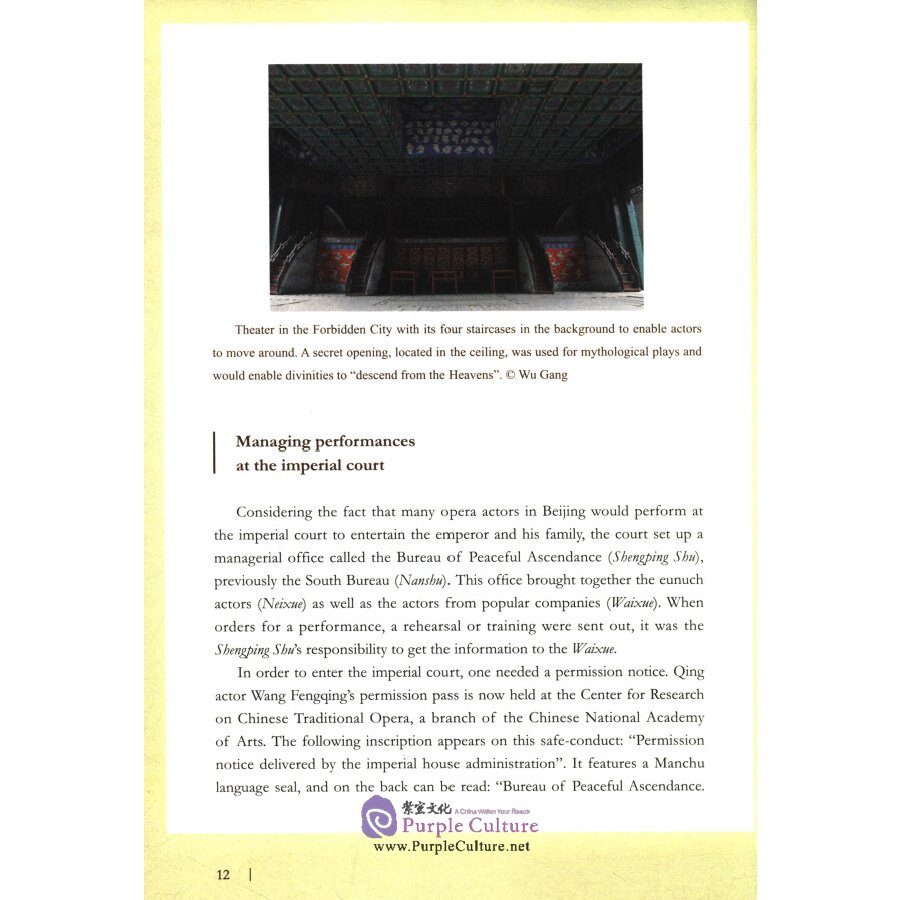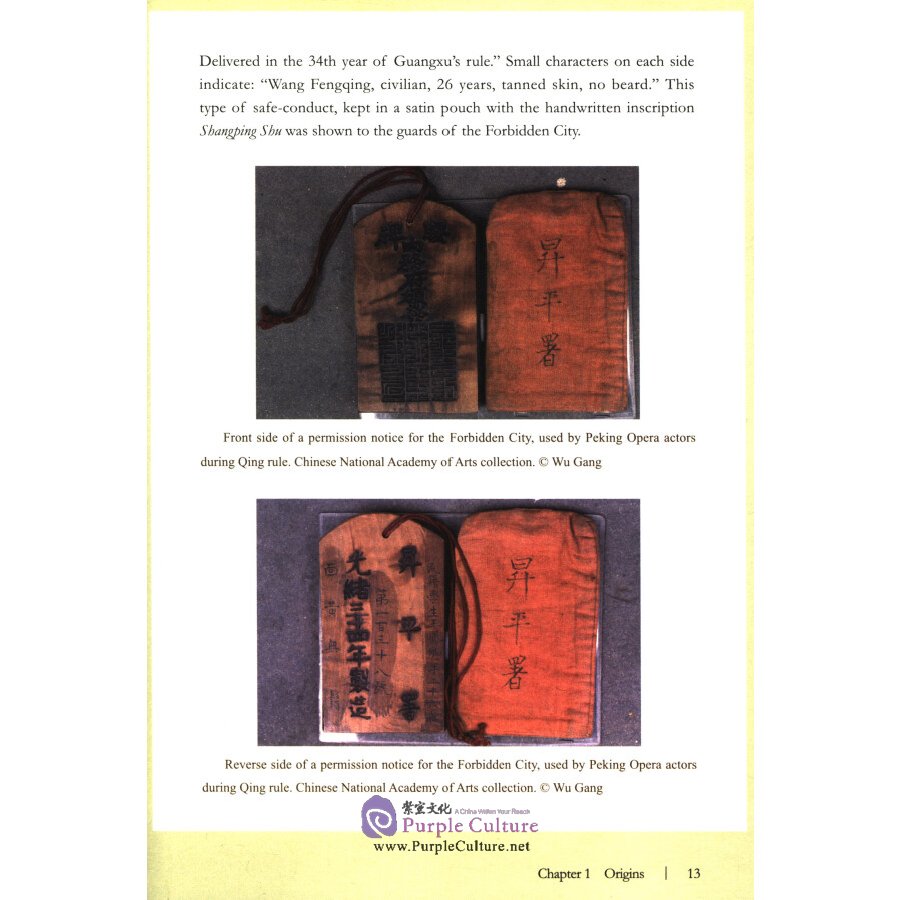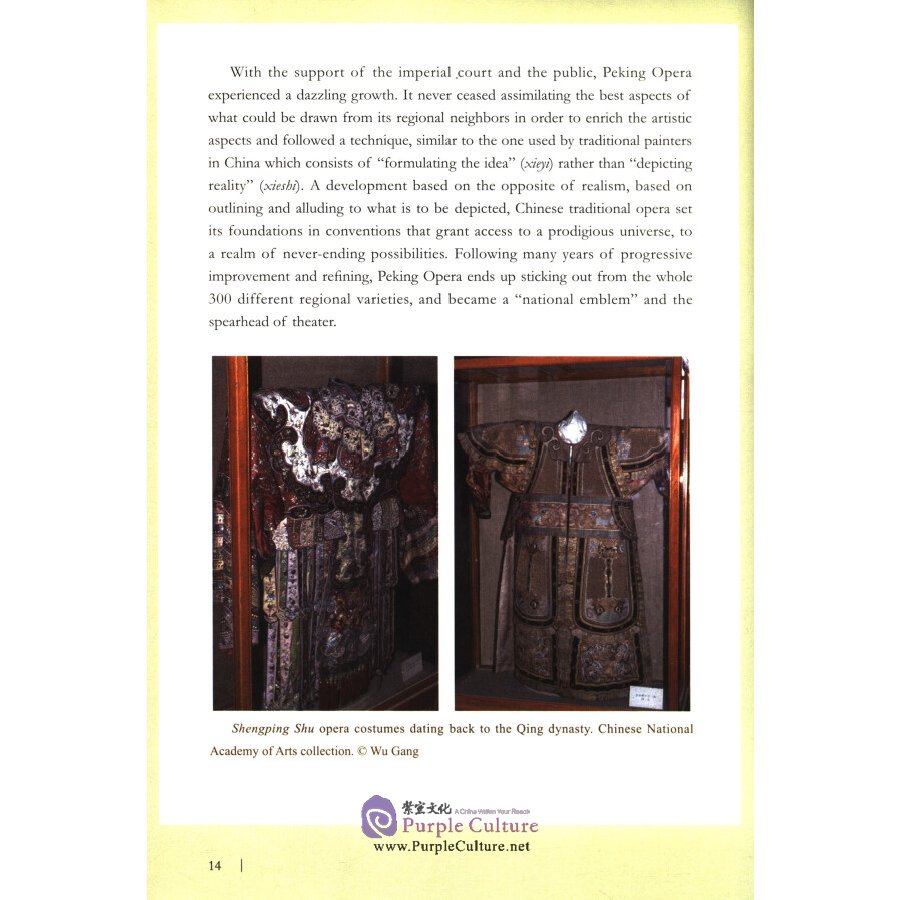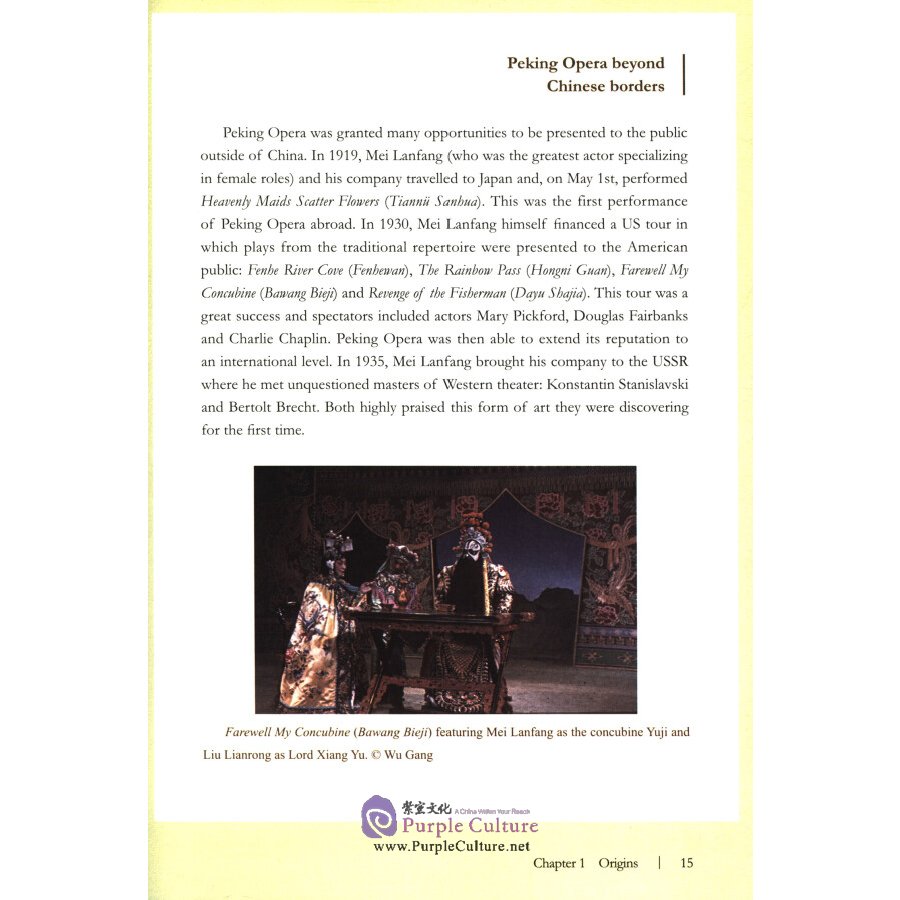Sample Pages Preview



 Preface
Preface
Peking Opera is one of the treasures of traditional Chinese culture, a holistic art that combines singing, dancing, music, dialogues, martial arts and numerous other artistic expressions. By being a spectator to Peking Opera, by enjoying it and getting to know it better, you will grasp the essence of Chinese culture.
Peking Opera is different from Western theater insofar as it strives to represent the idea of something rather than the thing itself. In that it is at the polar opposite of realism. It frees itself from the constraints of time and space and offers a sublimed and free representation of life. Peking Opera actors' unique style draws from everyday life without trying to imitate it. By hinting at a reality, Peking Opera grants us a performance that evokes life and is truer than nature itself. This manner of outlining and suggesting rather than describing which was molded by ancient creativity and perfected by modern successors has brought life to a whole panel of conventions: stripped-down, elegant and abstract yet suggestive conventions. Even though we are used to calling Peking Opera a "stylized play built upon conventional sets", that does not mean that Peking Opera is an art form too deep to be sound out. It is at everyone's reach, both elegant and popular. Young children, as well as first time spectators gladly give themselves up to this stylized performance, to the story they are being told and to the actors' craft.



